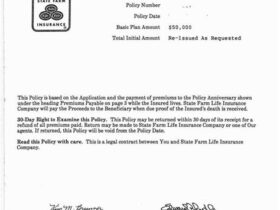Navigating the aftermath of an unexpected event that damages your property or causes injury can be overwhelming. Understanding the landscape of casualty claims is crucial for individuals and businesses alike. A casualty claim, at its core, is a request for compensation following a sudden, unexpected loss, ranging from property damage due to natural disasters to injuries sustained in accidents. This guide provides a comprehensive overview of casualty claims in the United States, covering various types, the claims process, and key considerations for a successful outcome.
What Are Casualty Claims? Defining the Scope
Casualty claims encompass a broad spectrum of losses, generally stemming from unforeseen events. These claims can involve damage to property, personal injury, or even death. Unlike claims related to wear and tear or gradual deterioration, casualty claims arise from incidents that are sudden, unexpected, or unusual. Common examples include:
- Property Damage: This can include damage to your home, vehicle, or other personal belongings due to events like fires, floods, hurricanes, tornadoes, vandalism, or theft.
- Personal Injury: These claims arise from injuries sustained in accidents, such as car accidents, slip and falls, workplace accidents, or product liability incidents.
- Liability Claims: These claims occur when you are held legally responsible for causing injury or damage to someone else’s property. For instance, if someone is injured on your property due to negligence, you could face a liability claim.
- Theft: Claims for stolen property, including vehicles, personal belongings, and business assets.
- Natural Disasters: Losses resulting from hurricanes, earthquakes, wildfires, and other natural catastrophes.
Casualty insurance serves as a provision against loss to persons and property, encompassing both legal hazards and those of accident and sickness. Major classes of casualty insurance include liability, theft, aviation, workers’ compensation, credit, and title.
Types of Casualty Insurance

Several types of insurance policies provide coverage for casualty losses. Understanding these policies is essential for determining the scope of your coverage and how to file a claim:
- Homeowners Insurance: This policy protects your home and personal property from a wide range of perils, including fire, windstorms, theft, and vandalism. It also provides liability coverage if someone is injured on your property.
- Auto Insurance: Auto insurance covers damages to your vehicle and injuries sustained in car accidents. It also provides liability coverage if you are at fault in an accident.
- Commercial Property Insurance: This policy protects businesses from property damage and loss of income due to covered perils. It can cover buildings, equipment, inventory, and other business assets.
- General Liability Insurance: This policy protects businesses from liability claims arising from bodily injury or property damage caused by their operations.
- Workers’ Compensation Insurance: This insurance covers medical expenses and lost wages for employees who are injured on the job. Workers’ compensation insurance, financed by employers’ contributions, compensates workers for losses suffered as a result of work-related injuries; compensation may include medical benefits, temporary incapacity benefits, permanent disability benefits, and, in an increasing number of countries, retraining benefits.
Navigating the Casualty Claims Process

Filing a casualty claim can seem daunting, but understanding the process can make it more manageable. Here’s a step-by-step guide:
- Report the Incident: Immediately report the incident to the appropriate authorities, such as the police or fire department. Obtain a police report or incident number for your records.
- Notify Your Insurance Company: Contact your insurance company as soon as possible to report the loss. Provide them with all the necessary details, including the date, time, and location of the incident, a description of the damage or injuries, and any relevant documentation.
- Document the Damage: Take photos and videos of the damage to your property or injuries sustained. Preserve any damaged items as evidence.
- Complete a Claim Form: Your insurance company will provide you with a claim form to complete. Fill out the form accurately and completely, providing all the requested information.
- Gather Supporting Documentation: Collect any documents that support your claim, such as police reports, medical records, repair estimates, receipts, and financial records.
- Cooperate with the Adjuster: An insurance adjuster will be assigned to your claim. Cooperate with the adjuster and provide them with any information they request. The adjuster will investigate the claim, assess the damage, and determine the amount of compensation you are entitled to.
- Negotiate a Settlement: Once the adjuster has completed their investigation, they will make a settlement offer. Review the offer carefully and negotiate if you believe it is insufficient to cover your losses.
- Seek Legal Advice: If you are not satisfied with the settlement offer or if your claim is denied, consider seeking legal advice from an attorney specializing in casualty claims.
Key Considerations for a Successful Claim

Several factors can influence the outcome of your casualty claim. Here are some key considerations:
- Policy Coverage: Understand the terms and conditions of your insurance policy, including the coverage limits, deductibles, and exclusions. Ensure that the loss is covered under your policy.
- Timely Reporting: Report the incident to your insurance company as soon as possible. Many policies have deadlines for reporting claims.
- Accurate Documentation: Maintain accurate and detailed records of the incident, including photos, videos, receipts, and other relevant documents.
- Cooperation: Cooperate fully with the insurance adjuster and provide them with any information they request.
- Professional Assistance: Consider seeking assistance from professionals, such as attorneys, public adjusters, or contractors, to help you navigate the claims process and maximize your recovery.
- Tax Implications: Be aware of the tax implications of casualty losses. In some cases, you may be able to deduct casualty losses from your federal income taxes. For tax years 2018 to 2025, your property must be in an area that is declared a federal disaster to claim a casualty loss from weather-related damage.
Navigating Personal Injury Claims

If your casualty claim involves personal injury, there are specific steps and considerations to keep in mind. The personal injury claims process might seem complicated. After you’ve been in touch and we’ve agreed to take on your personal injury claim, these are the stages that our solicitors will follow. If you have relatively minor injuries, we may be able to skip stages four and five.
- Seek Medical Attention: Prioritize your health and seek immediate medical attention for your injuries. Document all medical treatments and expenses.
- Determine Liability: Establish who was responsible for causing your injuries. This may involve investigating the accident, gathering evidence, and interviewing witnesses.
- Calculate Damages: Determine the full extent of your damages, including medical expenses, lost wages, pain and suffering, and other losses.
- Negotiate with the Insurance Company: Negotiate with the insurance company to reach a fair settlement that compensates you for your injuries and losses.
- File a Lawsuit: If you are unable to reach a settlement with the insurance company, you may need to file a lawsuit to pursue your claim.
Understanding casualty claims is essential for protecting your financial well-being and recovering from unexpected losses. By familiarizing yourself with the different types of claims, the claims process, and key considerations, you can navigate the process with confidence and maximize your chances of a successful outcome. When facing a casualty loss, remember to seek professional assistance from attorneys, insurance adjusters, and other experts to ensure your rights are protected and your claim is handled effectively.





Leave a Reply